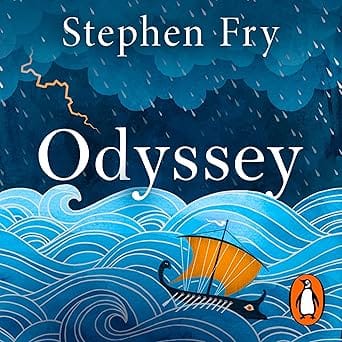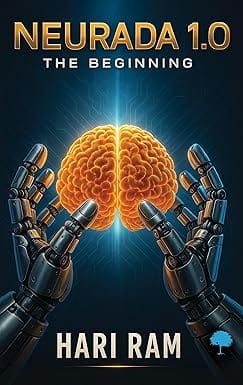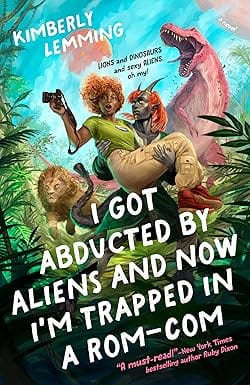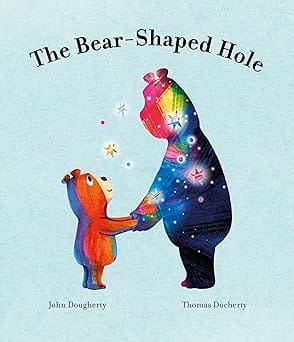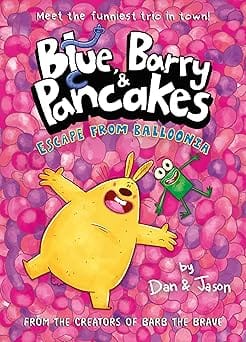-
Contemporary Fiction
- Contemporary Fiction
-
Children
- Children
-
Comics & Graphic Novels
- Comics & Graphic Novels
-
Non-Fiction
- Non-Fiction
-
Fiction
- Fiction
In The Hole in the Universe, an award-winning science writer “provides an illuminating slant on physics and mathematics by exploring the concept of nothing” (Scientific American).
Welcome to the world of cutting-edge math, physics, and neuroscience, where the search for the ultimate vacuum, the point of nothingness, the ground zero of theory, has rendered the universe deep, rich, and juicy. Every time scientists and mathematicians think they have reached the ultimate void, something new appears: a black hole, an undulating string, an additional dimension of space or time, repulsive anti-gravity, universes that breed like bunnies. Cole’s exploration at the edge of everything is “as playfully entertaining as it is informative” (San Jose Mercury News).
“A strong and sometimes mind-blowing introduction to the edges of modern physics.” —Salon.com
“Comprising an expansive set of topics from the history of numbers to string theory, the big bang, even Zen, the book’s chapters are broken into bite-sized portions that allow the author to revel in the puns and awkwardness that comes with trying to describe a concept that no one has fully grasped. It is an amorphous, flowing, mind-bending discussion, written in rich, graceful prose. As clear and accessible as Hawking’s A Brief History of Time, this work deserves wide circulation, not just among science buffs.” —Publishers Weekly, starred review
“Here we have the definitive book about nothing, and who would think that nothing could be so interesting . . . not only accessible but compelling reading.” —St. Louis Post-Dispatch
Amazon.com Review
The nothingness of the vacuum is the background to space and time. Cole shows how physicists' ideas about time, space, and reality flow out of their ideas about nothing, whether vacuum or ether. She writes with a half-smile and a glint of humor in her eye, colliding metaphors like particles at Fermilab:
.... Both space and time, individually, are as elastic as bungee cords. It was a further step, still, to see that the fabric of spacetime itself could warp under the influence of matter like hot asphalt under the tires of a heavy truck.... And then, the last straw: Not only could spacetime bend under the influence of matter, it could take matter into its own hands.
Cole's book makes a wry, witty complement to Brian Greene's The Elegant Universe. It's an exploration of string theory (among other things) that will leave your brain only lightly tied up in knots. Or in nots. After all, as Cole writes:
Nothing may be the single most prolific idea ever to plop into the human brain.... Understanding nothing matters, because nothing is the all-important background upon which everything else happens.
--Mary Ellen Curtin
--This text refers to an alternate kindle_edition edition.
From Booklist
Copyright © American Library Association. All rights reserved --This text refers to an alternate kindle_edition edition.
Review
As clear and accessible as Hawking's A Brief History of Time, this work deserves wide circulation, not just among science buffs."
-Publishers Weekly (starred review)
Cole has plenty of experience making the most abstruse theories intelligible to
the lay reader. . . . A clever and readable investigation."-New York Post
--This text refers to an alternate kindle_edition edition.
About the Author
--This text refers to an alternate kindle_edition edition.
- Home
- Children
- Children & Young Adult
- The Hole In The Universe How Scientists Peered Over The Edge Of Emptiness And Found Everything
The Hole In The Universe How Scientists Peered Over The Edge Of Emptiness And Found Everything
SIZE GUIDE
- ISBN: 9780156013178
- Author: K C Cole
- Publisher: Harcourt
- Pages: 320
- Format: Paperback
Book Description
In The Hole in the Universe, an award-winning science writer “provides an illuminating slant on physics and mathematics by exploring the concept of nothing” (Scientific American).
Welcome to the world of cutting-edge math, physics, and neuroscience, where the search for the ultimate vacuum, the point of nothingness, the ground zero of theory, has rendered the universe deep, rich, and juicy. Every time scientists and mathematicians think they have reached the ultimate void, something new appears: a black hole, an undulating string, an additional dimension of space or time, repulsive anti-gravity, universes that breed like bunnies. Cole’s exploration at the edge of everything is “as playfully entertaining as it is informative” (San Jose Mercury News).
“A strong and sometimes mind-blowing introduction to the edges of modern physics.” —Salon.com
“Comprising an expansive set of topics from the history of numbers to string theory, the big bang, even Zen, the book’s chapters are broken into bite-sized portions that allow the author to revel in the puns and awkwardness that comes with trying to describe a concept that no one has fully grasped. It is an amorphous, flowing, mind-bending discussion, written in rich, graceful prose. As clear and accessible as Hawking’s A Brief History of Time, this work deserves wide circulation, not just among science buffs.” —Publishers Weekly, starred review
“Here we have the definitive book about nothing, and who would think that nothing could be so interesting . . . not only accessible but compelling reading.” —St. Louis Post-Dispatch
Amazon.com Review
The nothingness of the vacuum is the background to space and time. Cole shows how physicists' ideas about time, space, and reality flow out of their ideas about nothing, whether vacuum or ether. She writes with a half-smile and a glint of humor in her eye, colliding metaphors like particles at Fermilab:
.... Both space and time, individually, are as elastic as bungee cords. It was a further step, still, to see that the fabric of spacetime itself could warp under the influence of matter like hot asphalt under the tires of a heavy truck.... And then, the last straw: Not only could spacetime bend under the influence of matter, it could take matter into its own hands.
Cole's book makes a wry, witty complement to Brian Greene's The Elegant Universe. It's an exploration of string theory (among other things) that will leave your brain only lightly tied up in knots. Or in nots. After all, as Cole writes:
Nothing may be the single most prolific idea ever to plop into the human brain.... Understanding nothing matters, because nothing is the all-important background upon which everything else happens.
--Mary Ellen Curtin
--This text refers to an alternate kindle_edition edition.
From Booklist
Copyright © American Library Association. All rights reserved --This text refers to an alternate kindle_edition edition.
Review
As clear and accessible as Hawking's A Brief History of Time, this work deserves wide circulation, not just among science buffs."
-Publishers Weekly (starred review)
Cole has plenty of experience making the most abstruse theories intelligible to
the lay reader. . . . A clever and readable investigation."-New York Post
--This text refers to an alternate kindle_edition edition.
About the Author
--This text refers to an alternate kindle_edition edition.
Related Books
User reviews
NEWSLETTER
Subscribe to get Email Updates!
Thanks for subscribing.
Your response has been recorded.

India's Iconic & Independent Book Store offering a vast selection of books across a variety of genres Since 1978.
"We Believe In The Power of Books" Our mission is to make books accessible to everyone, and to cultivate a culture of reading and learning. We strive to provide a wide range of books, from classic literature, sci-fi and fantasy, to graphic novels, biographies and self-help books, so that everyone can find something to read.
Whether you’re looking for your next great read, a gift for someone special, or just browsing, Midland is here to make your book-buying experience easy and enjoyable.
We are shipping pan India and across the world.
For Bulk Order / Corporate Gifting
 +91 9818282497 |
+91 9818282497 |  [email protected]
[email protected]
Click To Know More
INFORMATION
POLICIES
ACCOUNT
QUICK LINKS
ADDRESS
Shop No.20, Aurobindo Palace Market, Near Church, New Delhi






